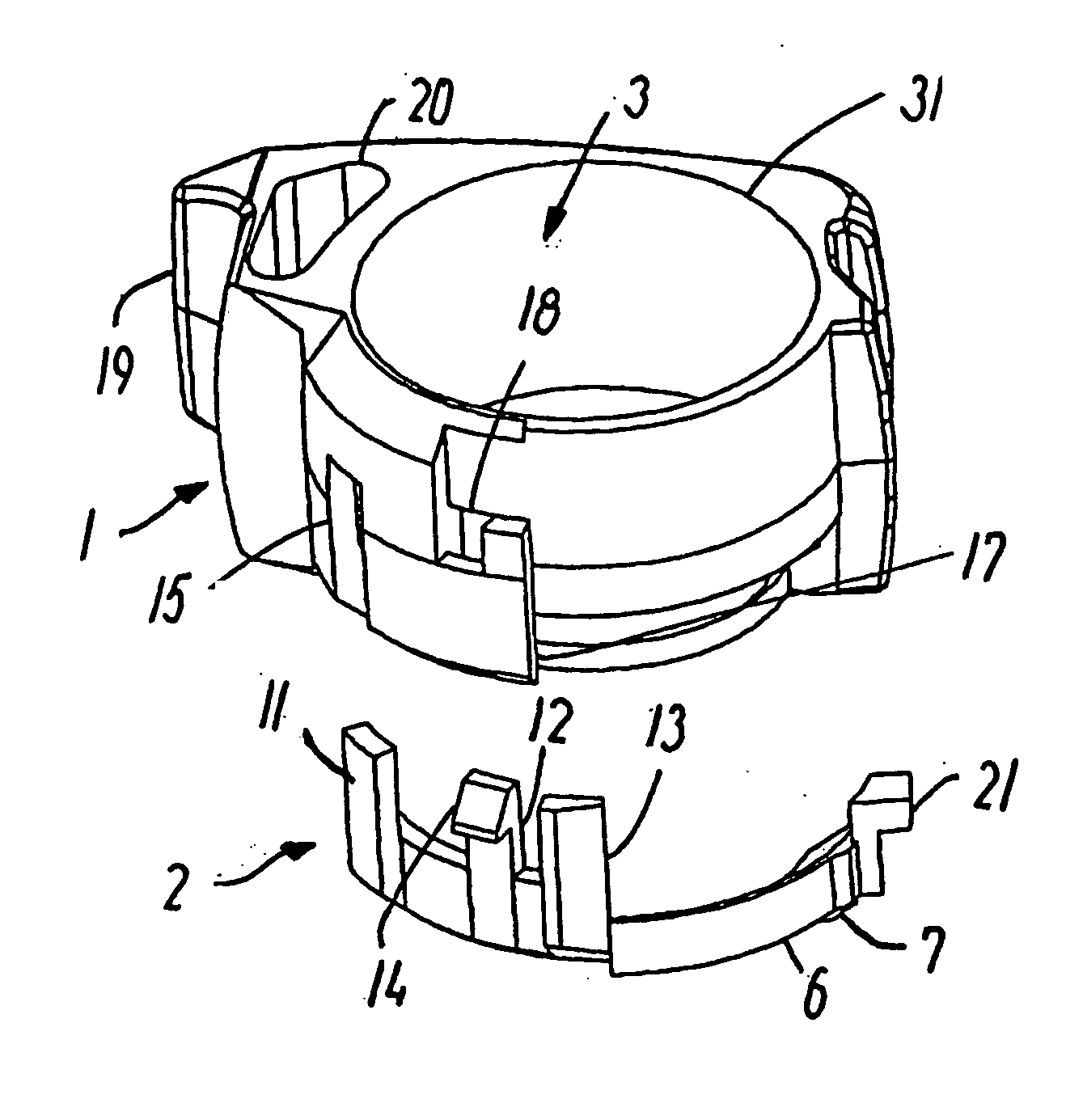Battery compartment for a hearing aid
a hearing aid and battery technology, applied in the field of hearing aids, can solve the problems of affecting the service life of hearing aids, and affecting the service life of hearing aids, and achieve the effect of long travel and good resilien
- Summary
- Abstract
- Description
- Claims
- Application Information
AI Technical Summary
Benefits of technology
Problems solved by technology
Method used
Image
Examples
Embodiment Construction
[0035] Reference is first made to FIG. 1, which shows an exploded view of a preferred embodiment of the battery compartment according to the invention. The battery compartment comprises two parts, a first part 1 and a second part 2.
[0036] The first part 1 is the main part and comprises a recess 3, defined by a generally cylindrical wall 31 and by a bottom wall 4. The recess 3 is adapted for accommodating a battery (not shown). The first part 1 is preferably a one-piece molded part. In the bottom wall 4 of the recess 3 an aperture 5 (visible in FIGS. 3 and 4 only) is formed. The aperture 5 allows one terminal of the battery to make and break with a contact in the hearing aid housing 101 in a manner known per se, the other terminal of the battery making and breaking in a similar manner with another contact in the hearing aid housing through the uncovered upper end of the recess 3. The making and breaking of the battery with the contacts is effected by motion of the battery compartmen...
PUM
 Login to View More
Login to View More Abstract
Description
Claims
Application Information
 Login to View More
Login to View More - R&D Engineer
- R&D Manager
- IP Professional
- Industry Leading Data Capabilities
- Powerful AI technology
- Patent DNA Extraction
Browse by: Latest US Patents, China's latest patents, Technical Efficacy Thesaurus, Application Domain, Technology Topic, Popular Technical Reports.
© 2024 PatSnap. All rights reserved.Legal|Privacy policy|Modern Slavery Act Transparency Statement|Sitemap|About US| Contact US: help@patsnap.com










